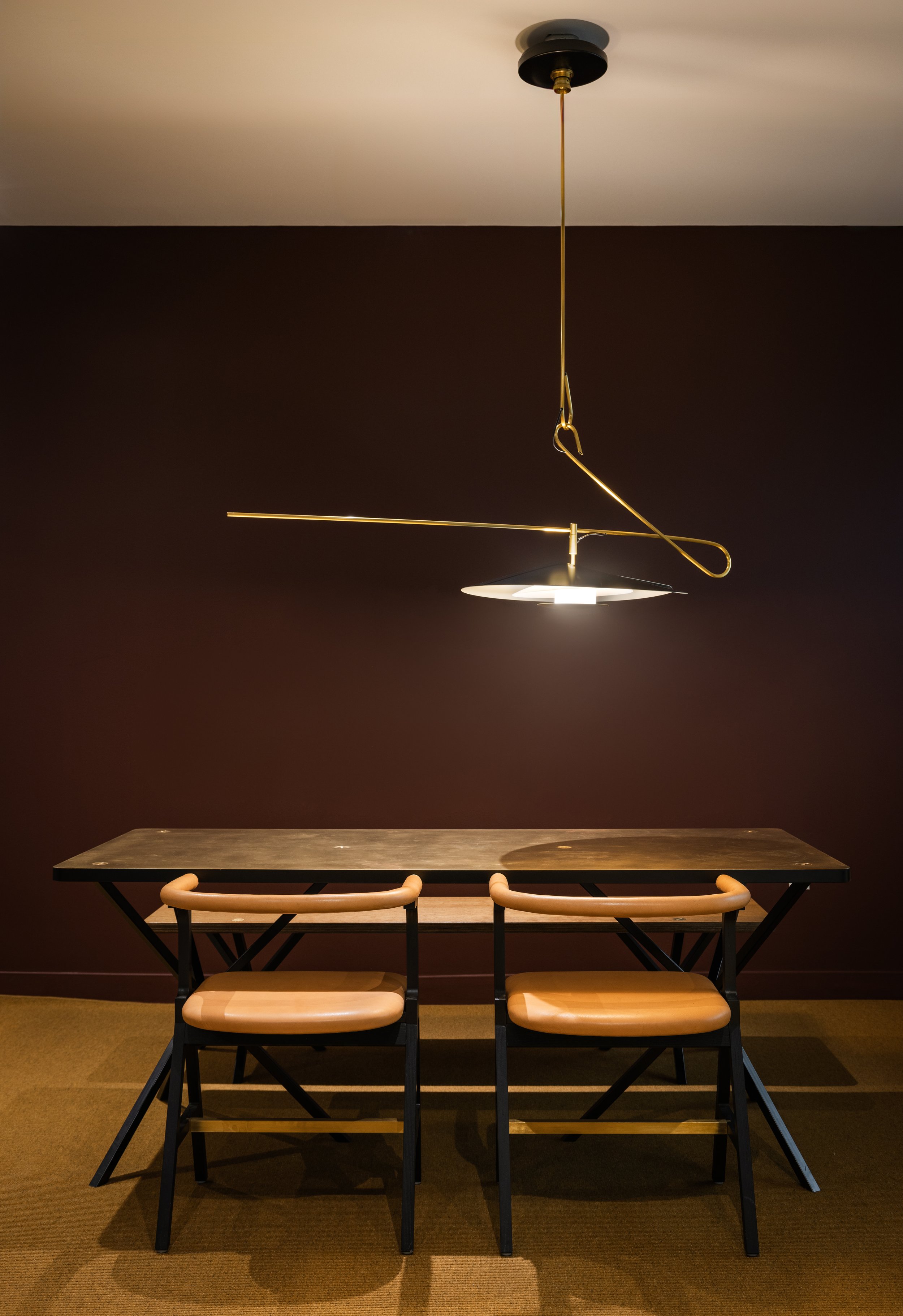#448 - DAVID WEEKS, Founder of David Weeks Studio
SUMMARY
This week David and Marina of FAME Architecture & Design are joined by David Weeks, founder of David Weeks Studio. The three discussed David’s artistic childhood and education; studying sculpture and painting; influence of art education on design career; working with Ted Muehling; starting a studio as a lighting designer; artists and creators priced out; progression of lighting career and studio growth; discovery in design and art; David Weeks Studio design style; minimalism done well; and more. Enjoy!
ABOUT DAVID
Widely regarded as the founding father of North American lighting design, David Weeks has been a pioneering figure in Brooklyn’s burgeoning independent design movement since his studio's early roots in Dumbo. His genre-defining work is the result of a distinctly hands-on, sculptural process that explores scale and proportion, balance, and movement. A native of Athens, Georgia, David studied sculpture and painting at the Rhode Island School of Design before founding his eponymous Brooklyn, NY studio in 1996.
In addition to lighting, Weeks creates furniture, textiles, home goods, and wooden toys with partners, including Roll&Hill, Moroso, Tala, Habitat, and Areaware, among others. His award-winning pieces have been exhibited in Milan, Paris, London, and New York and are installed in high-profile commercial locations and private collections worldwide. Most recently, Weeks was awarded the esteemed Rolland Rome Prize in design, leading to a six-month fellowship at the American Academy in Rome. Weeks has recently opened the doors to a new studio in Clinton Hill, Brooklyn – near the creative current of the Brooklyn Navy Yard.
TIMESTAMPS
(00:00) David's childhood & education.
(09:10) Studying sculpture and painting.
“I think painting is the only thing you can do where you can destroy and create at the same moment. You can fuck it up and get this great edge. I think designing back in the earlier days, you start from scratch, and you try not to be distracted by what it should be or what you think it's going to be, or even the dimensions. There’s a point where I stopped using the ruler all the time. I’d draw the drawing just by eye to make it look the way I want it to look and then apply scale to it at the end.” (11:25)
(12:34) Art education influence on career & living in New York.
(18:20) Early career & working with Ted Muehling.
(25:37) Starting a studio & becoming a lighting designer.
(36:17) Artists and creators priced out.
“What separated the successful people from the not-so-successful ones is that they were able to come up with an idea, create it, and make money on it, so they survived. Otherwise, you can make something nice, but the powder coating would cost too much, and it wasn't really a compelling piece to start with, or it looked too much like an Ikea product. The product has to be elevated to a degree, but you also have to be economical in how it’s produced.” (48:27)
(40:37) Progression of lighting career.
(49:05) Challenges of studio growth.
(58:37) Discovery in design and art.
“You want to make a form, so you take a piece of paper and a pair of scissors, cut it a certain way, and it holds a certain way. There's this sort of discovery, even if I drew what I thought it was going to be in the beginning, there's no way you can predict the curves perfectly or how the form will turn out with each cut. It's a tactile experience when designing that way. I think it's hard for people to grasp. Some employees or designers I worked with in the past would say, “We can't do that because it looks like this, or that's going to fall over.” But I think we can solve that problem when that time comes. I don't want to not try to make something because an issue might happen. There's an aspect of suspending disbelief or just faith that I trust that my abilities will solve that problem.” (59:58)
(01:05:25) In house production & hidden elements.
“It's nice to take to look at yourself and be proud of the things you’ve created. But it's also remarkable to make something and never see it again. At one point, David Byrne bought some Chandlers from us, and everybody in the studio wrote messages on the inside of the hubs, like, “Hey, we love your music.” And then we closed them up and he'll never know.” (01:08:19)
(01:11:01) David Weeks Studio design style.
(01:16:42) Favorite industrial design piece.
(01:18:25) What's next for David Weeks?



























